
учебник 3 курс ICT
.pdf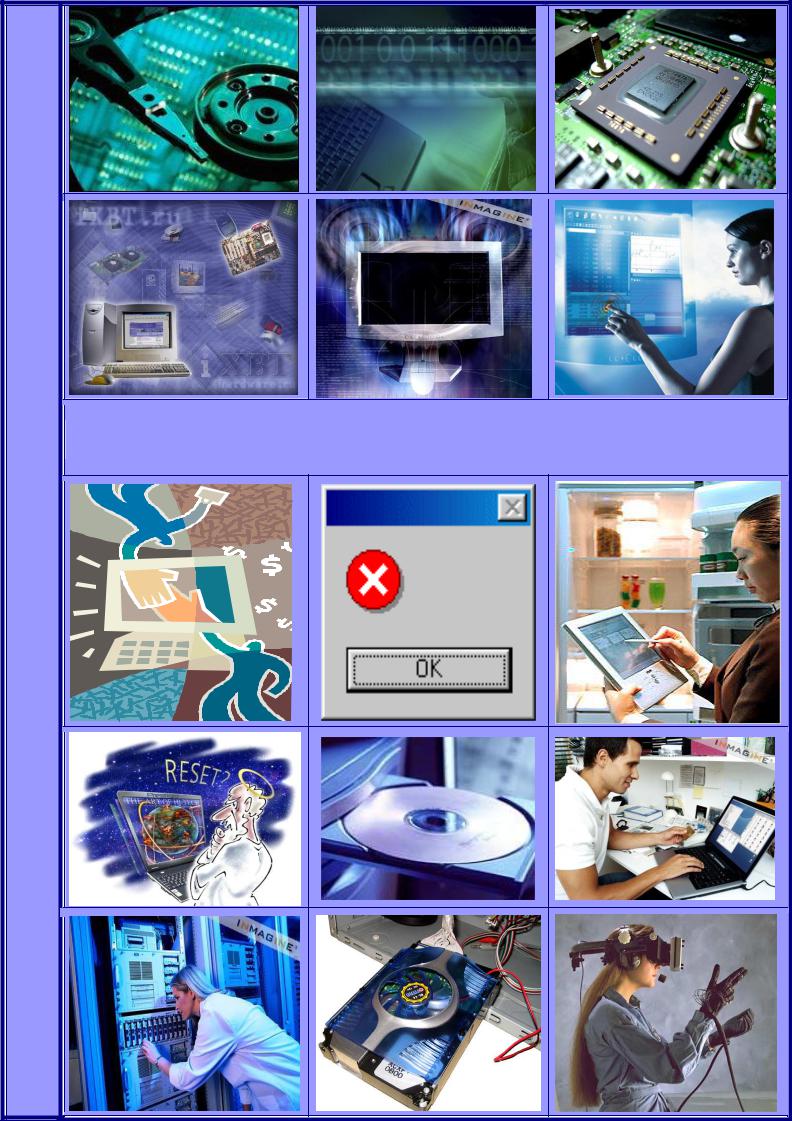
ENGLISH FOR ICT STUDENTS |
А.Д. Музафарова |
А.Г. Ковалева |
ENGLISH FOR ICT STUDENTS
Учебное пособие по английскому языку
для студентов направления «Информатика и вычислительная техника»
часть 1
Екатеринбург
2009
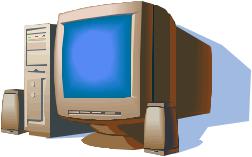
CONTENTS
PEOPLE AND COMPUTERS: INFORMATION SOCIETY……….………………………………4
INPUT DEVICES…………………………………………………………………………………..29
DATA PROCESSING………………………………………………………………………………48
OUTPUT DEVICES…………………………………………………..……………………………63
DATA STORAGE…………………………………………………………………………………..84
OPERATING SYSTEMS……………………………………..…………………………………..104
EXTRA HUMOUR SECTION…………………………….………….…………………………..122
СПИСОК ИСПОЛЬЗОВАННОЙ ЛИТЕРАТУРЫ…………………………..…………………137
3
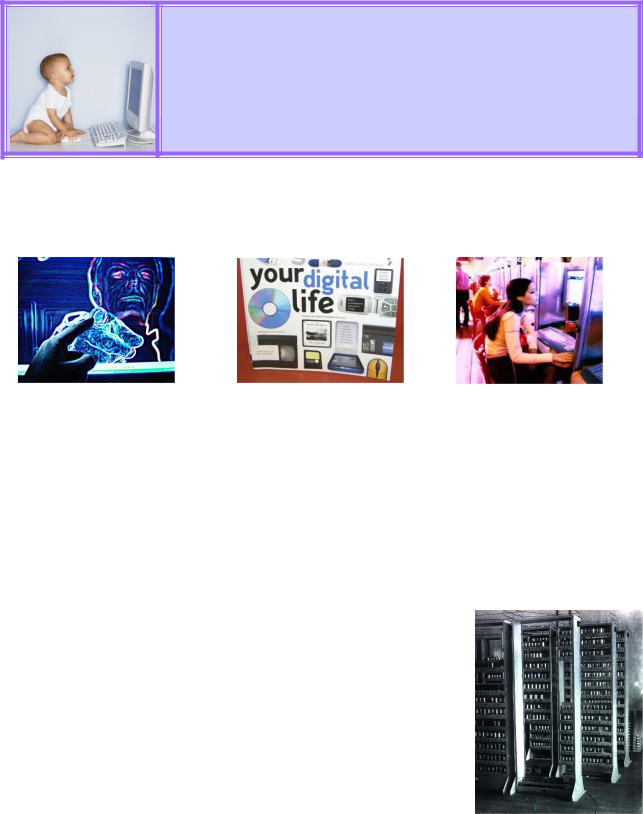
PEOPLE AND COMPUTERS: |
INFORMATION SOCIETY |
KEY INFORMATION SECTION 1
At present many people in most countries are engaged in working with information. Information and Communication Technology (ICT) is concerned with the use of computer technology in managing and processing information. The computer now has a role in almost every aspect of modern life, and it has radically affected the way people live. People who have grown up with PCs and microchips are often called the digital generation.
Informed citizens of our information-dependent society should be computer-literate, which means that they should be able to use computers as everyday problem-solving devices without being experts on the design of computers or programming.
A computer is a machine with an intricate network of electronic circuits that has many remarkable powers. The first electronic computers were developed in the mid-20th century. These were the size of a large room, consuming as much power as several hundred modern personal computers. Modern computers based on integrated circuits are millions to billions of times more capable than the early machines, and occupy a fraction of the space. PCs in their various forms have become icons of the Information Age. The embedded computers are found in
many devices from MP3 players to aircraft and from toys to industrial robots.
Each time you turn this miraculous device on, it is a tabula rasa that, with appropriate hardware and software, is capable of doing anything you ask. A computer can solve a series of problems and make thousands of logical decisions almost instantaneously without becoming tired. It can replace people in dull, routine tasks. There are times when a computer seems to operate like a mechanical
4
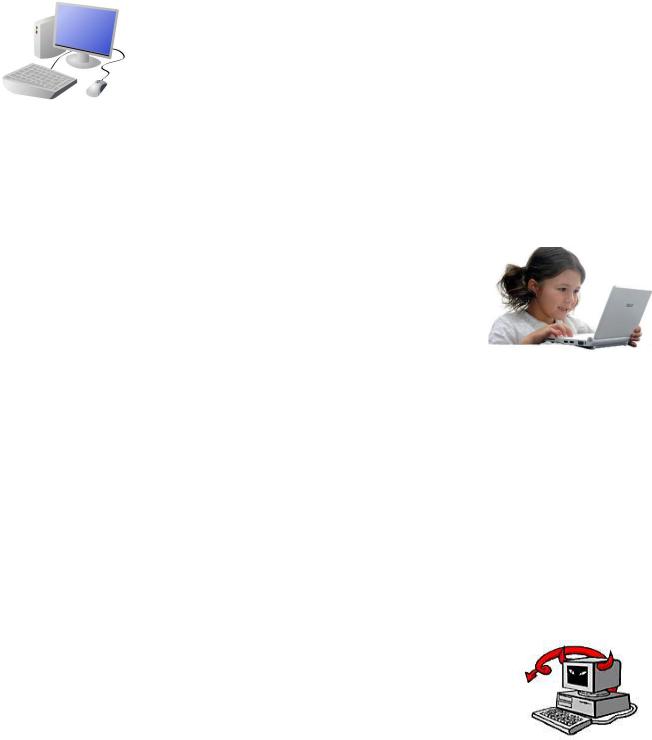
'brain', but its achievements are limited by the minds of human beings as it only works according to the given instructions. It is a calculating machine that speeds up financial calculations; it is an electronic filing cabinet which manages large collections of data such as customers' lists, accounts, or inventories. It is a magical typewriter that allows you to type and print any kind of document — letters, memos or legal documents. It is a personal communicator that enables you to interact with other computers and with people around the world. If you like gadgets and electronic entertainment, you can even use your PC to relax with computer games.
Computers are general purpose machines. |
By |
changing the program |
instructions, they can be used to process information |
in different ways. For |
|
example, a word processor program allows the computer to process text, a |
||
spreadsheet enables it to perform calculations, |
a database program is used |
|
for searching and sorting records, and a browser program is designed |
to look at Internet pages. |
|
Computers are used in almost every type of work and can be found everywhere. Computercontrolled robots are able to improve the quality of manufactured products and to increase the productivity of industry. Computers can control the work of power stations, plants and docks. The work of banks depends upon computer terminals for millions of daily operations. Computers form a part of many military systems including communication and fire control.
Space exploration depends on computers for guidance, on-board environment and research. Computers are widely used in medicine as valuable diagnostic tools. Air traffic control is impossible without them.
In libraries and bookshops, they can help to find books as quickly as possible. Most television advertisements and many films use graphics, produced by a computer. Personal computers influence education, affecting both the learner and the teacher. The list of applications of PCs is almost endless and many other uses of computers that we cannot imagine at present will become commonplace in future.
But such omnipresence of computers in our lives has its darker side.
Our society has developed technological dependence. When computers are down, our way of
life breaks down: planes stop flying, telephones don't work, banks have to close.
Computers produce electronic waste, plastic cases and microchips that are not biodegradable
and have to be recycled or just thrown away.
They are responsible for health problems, e.g. computer addiction, an
inappropriate and excessive use of computers.
Cybercrime, crime committed with the help of computers, is creating serious problems.
Citizens may feel a loss of privacy because of unauthorized use of personal data or receiving unwanted electronic messages.
5
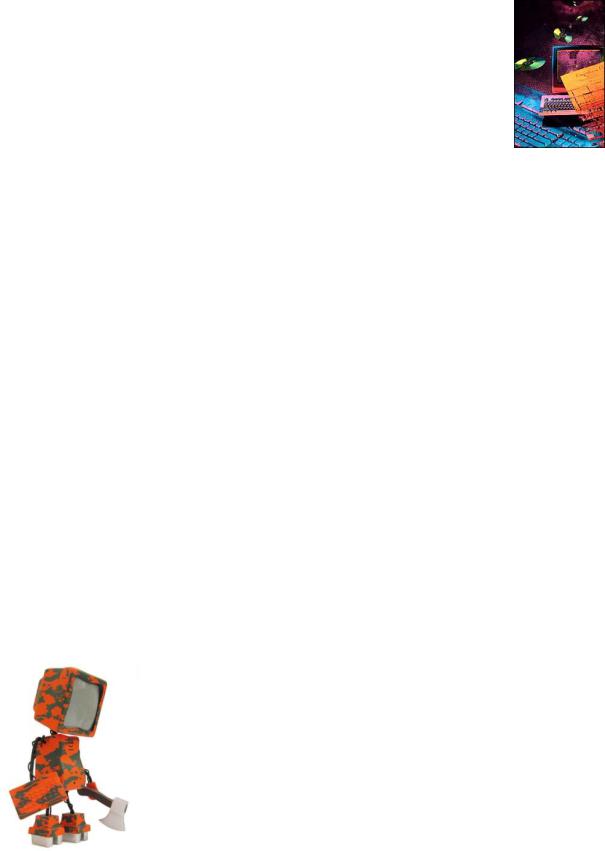
VOCABULARY PRACTICE SECTION 1
1. Match the things people do on the computer, their occupations and what they say about the use of computers in their lives.
1. |
A publication |
A. |
A university professor |
2. |
A business graph |
B. |
A police officer |
3. |
Web pages and email |
C. |
A home user |
4. |
Searching the web |
D. |
A publisher |
5. |
Data sorting and searching |
E. |
A bank manager |
6. |
Photo editing |
F. |
A secretary |
7.'I use computers to do the usual office things like write letters and faxes, but what I find really useful is email. We are an international company and I send emails to our offices all over the world.'
8.'We use PCs to produce all sorts of texts in digital format. We publish e-books (electronic books) and interactive e-learning programs on CD, and we help a local company to design an online newspaper, displayed on the Web.'
9.'We use financial software to make calculations and then generate graphs or charts. We also use a database to store information so that it can be easily searched.'
10.'I like to retouch photos on my computer; I improve them by making a few touches and then
save them on a CD. I also enjoy looking at music portals on the Web. I surf the Web every day and I often download files, I copy music files from the Net to my PC.'
11.'Having databases of names and fingerprints is useful for us.'
12.'Our students can connect to the Internet to download software and also to find information for different research projects they are working on.'
2.What negative effect of computerization do these sentences refer to?
1.We are sorry to announce that most flights are delayed or cancelled.
2.He should go to a psychologist. He spends hours surfing the Web.
3.Technology changes so quickly that we have to scrap computers when
they become obsolete.
4. I've been getting emails about offers for lots of different products.
5.My computer system has been broken into and some useful information has been destroyed
6
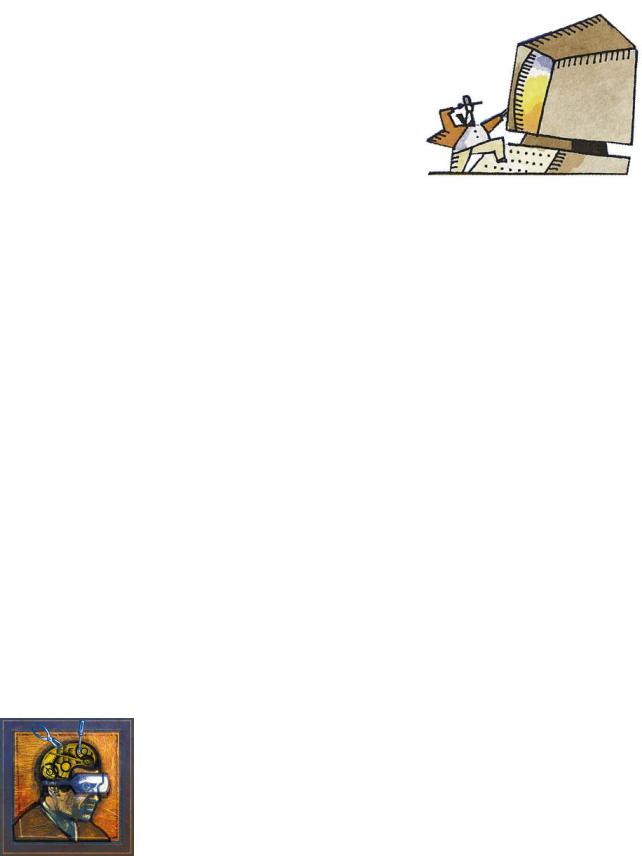
3. Fill in the gaps choosing the appropriate word.
1.The basic function of a computer is ………. information. a) to switch; b) to keep; c) to process.
2.A computer can carry out arithmetic-logical operations ……
a) quickly; b) instantaneously; c) during some minutes.
3. Computers have become ………. in homes, offices, research institutes.
a) commonwealth; b) commonplace; c) common room. 4. Space ………. uses computers widely.
a) information; b) production; c) exploration. 5. Computers are used for image ………..
a) processing; b) operating; c) producing. 6. Computers help in ………of economy.
a) environment; b) management; c) government.
7. Air traffic control depends on computer - ……… information. a) generated; b) instructed; c) combined.
4. Which of the terms in the box are defined below?
|
|
|
virtual reality |
|
1. |
technology |
for people with disabilities |
GPS (Global Positioning System) |
|
2. |
a program that reads aloud onscreen text menus |
wireless |
network |
|
|
and icons |
|
assistive |
technology |
3. |
navigation |
system |
DVD recorder |
screen reader |
4. |
the artificial environment of the video games |
HMD (head-mounted display) |
||
|
|
|
|
|
Complete these sentences with words from the box above (there are some extra terms).
1. The ……. is a piece of software that interfaces with your PC and allows you, via keyboard commands, to get any text information read to you in synthetic speech.
2.A ……. , as popularized by virtual reality, lets the user immerse him/herself in a synthetically generated environment.
3.An ……. is a touch-sensitive device where a special pen or your finger can act as a mouse.
7
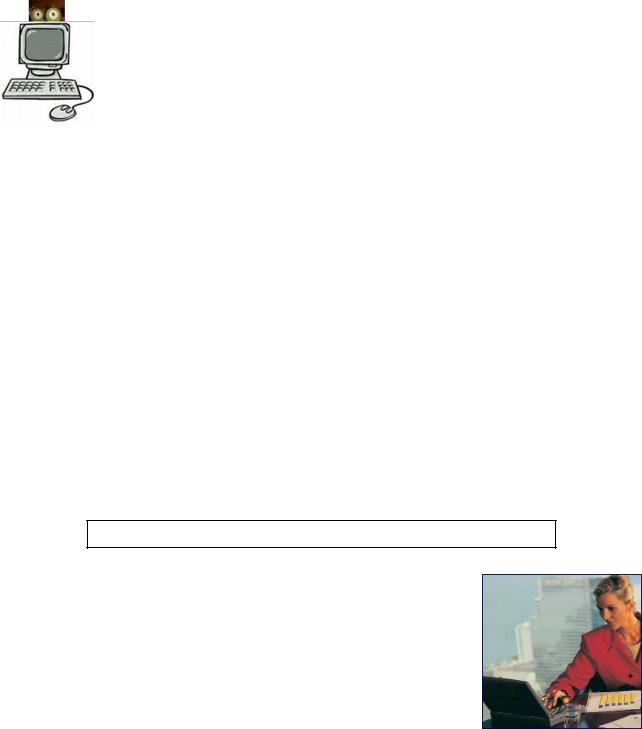
4.Tony Adams is now the proud owner of a dark silver Vogue, complete with leather interior, …. navigation, and a ……. with LCD TV screens.
5.The upgraded ……. at my university is great: we can connect our laptops, PDAs and Wi-Fi cell phones to the network anywhere in the campus. Communication is becoming easier and easier.
5. Put the proper words into sentences.
computer |
networks info |
computer literate routine boring |
repetitive |
tasks accuracy |
come to terms with (2) quantative |
|
|
|
1. |
Society is heading in the direction of ... majority. |
2. |
Computer programs now can integrate text, ... data and graphs. |
3. |
The source of ... is the computer. |
4. |
It is difficult for some people to ... the speed of change in the modern world. |
5. |
Any ... which people find ... and tiring can now be carried out by machines. |
6. |
Computers give us speed, ..., scope, quality, flexibility, large capacity, elimination of the ... and |
|
increased efficiency. |
7. |
We need to ... with expanding computer technology and adjust our vision to a whole new world. |
8.As more and more people are linked by ..., how soon will it be before the paperless office becomes a reality?
6. Complete the text with the nouns in the box to form appropriate noun phrases. There are two nouns that you do not need to use.
century fame key life information nonsense technology time
With the development of (1) ……. in recent years, the way of (2) ……. for a great number of people has changed beyond recognition. Because of increased speed in the transfer of (3) ……., news and ideas travel around the world in seconds. Whatever we want to know is available at the touch of a (4) ……. Not long after the turn of the (5) ……., scientists expect us to have computers which are so small and powerful that they
will fit into our pockets. Because of this, some believe that newspapers and books will become a waste of (6) ……., as we will have all the information we need through our personal computers.
8

KEY INFORMATION SECTION 2
Computer parts and essentials.
A computer is an electronic machine that accepts data in a certain form, processes the data, stores and gives the results of the processing in a specified format as information (manipulates data according to a set of instructions).
What distinguishes a computer from other information-processing devices are three basic characteristics:
• A computer is completely electronic - all its functions are carried out with electrical signals.
• A computer can remember information and hold it for future use. Computers do this on a temporary basis with memory circuits and permanently with storage devices such as magnetic disk and tape.
• A computer is programmable. Unlike other devices, built to perform a single function or limited
range of functions, |
a computer can be instructed to do whatever |
task we tell it to do. |
A typical computer |
consists of two parts: hardware and software. |
|
Hardware is any |
piece of computer equipment, electronic |
or mechanical parts making up the |
computer system that are tangible objects.
Software refers to parts of the computer which do not have a material form, such as programs, data, protocols, etc. When software is stored in hardware that cannot easily be modified (such as BIOS ROM in an IBM PC compatible), it is sometimes called "firmware" to indicate that it falls into an uncertain area somewhere between hardware and software.
There are three basic hardware sections.
1. The CPU is the most important item of hardware, the heart of the computer, a microprocessor chip at the center of the computer system which processes data, executing program instructions, and coordinates the activities of all the other units.
2. The main memory holds the instructions and data which are being processed by the processor. It has two main sections: RAM (random access memory) and ROM (read only memory). It only stores information while the computer is switched on and it has a limited capacity.
9
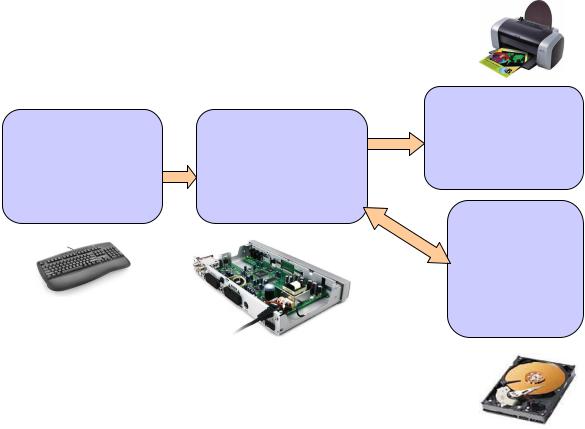
3. Peripherals are the physical units (devices) that can be attached to the computer. They include:
•Input devices, which enable data and commands to be fed into the computer memory (e.g. the keyboard and the mouse).
•Output devices, which let us extract the results from the system, usually to display the processed data (e.g. the monitor and the printer).
I/O is the means by which a computer exchanges information with the outside world. Hard disk drives, floppy disk drives and optical disc drives serve as both input and output devices. Computer
networking is another form of I/O.
• Storage devices, which are used to store both data and programs permanently (e.g. hard disks and DVD-RW drives). They have a much greater capacity than the main memory. Disk drives are used to read and write data on disks.
On the rear panel of the computer there are several ports into which we can plug a wide range of external devices with the help of connectors (e.g. a scanner, a modem, etc.). They allow communication between the computer and the devices.
These are the main physical units of a computer system, generally known as the configuration.
Functions of a PC.
The main functions any computer is designed to perform are: input, processing, output and storage.
INTPUT |
PROCESSING |
Raw data is presented |
The data is manipulated |
to the computer. Data |
according to program |
is entered with a |
instructions. Data is |
keyboard, a webcam, |
transformed into useful |
etc. |
information. |
|
|
|
|
OUTPUT Results take the form of words, pictures and sounds – on the screen
or in printed form.
STORAGE
Files and programs are held in memory systems where they are available for processing.
10
